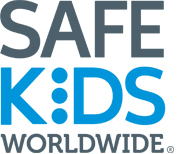You are here
Safe Kids Worldwide Joins Efforts to Prioritize Bike and Pedestrian Safety
MEDIA CONTACT
Kristin Davis
[email protected]
Phone # 540.841.9825
FOR IMMEDIATE RELEASE
May 15, 2025
Safe Kids Worldwide Joins Efforts to Prioritize Bike and Pedestrian Safety
To Mark UN Global Safety Week, Advocates Push for Safer Streets
Washington, D.C. – Road traffic injuries are the leading cause of death for children in the United States and around the world. Every day, 500 young people die on the world’s roadways — one child every three minutes — with pedestrians and cyclists making up a quarter of all road traffic deaths. Thousands more are injured, some permanently.
To draw attention to this public health crisis and to encourage action at national and local levels to make walking and cycling safe, Safe Kids Worldwide is teaming up with global and domestic partners to mark the United Nations Global Safety Week, observed May 12-18.
“Walking and biking offer fun and freedom, and when safe, contribute to healthier lifestyles, sustainable cities, and societies that are beneficial to all,” said Torine Creppy, president of Safe Kids Worldwide. “We are excited to partner on this observance with organizations that include the Child Safety Initiative of the FIA Foundation, the Global Alliance of NGOs for Road Safety, Youth for Road Safety (YOURS), and Bloomberg Philanthropies. When we all work together toward a common goal, we can make an even bigger impact.”
This year’s campaign — #MakeWalkingSafe, #MakeCyclingSafe — focuses on the urgent need to improve safety for children as they walk and bike to school and while they’re outside playing or going about their daily lives. The goal is to encourage civic and school leaders, as well as families, to assess their local walking environments, and to advocate for safer streets.
Safe Kids is encouraging the use of Mobility Snapshots during the week, an initiative created by the Global Alliance of NGOs for Road Safety that provides tools to allow anyone to assess and demonstrate the dangers pedestrians and other vulnerable road users face at a local intersection — as well as providing proven solutions that can be advocated for to make them safer.
For families, Safe Kids offers these tips to keep children safe:
While on a bike or scooter:
- Wear a properly fitted helmet. It is the best way to prevent head injuries and death.
- Ride in a bike lane when you can. If not, ride in the same direction as traffic as far on the right-hand side as possible.
- Use hand signals and follow the rules of the road. Be predictable by riding in a straight line.
- Wear bright colors and use lights, especially when riding at night and in the morning. Reflectors on your clothes and bike will help you be seen.
- Ride with your children. Stick together until you are comfortable that your kids are ready to ride on their own.
While walking:
- Teach kids at an early age to look left, right and left again before crossing the street. Then remind them to continue looking until safely across.
- Teach kids to put phones, headphones and devices down when crossing the street. It is particularly important to reinforce this message with teenagers.
- It’s always best to walk on sidewalks or paths and cross at street corners, using traffic signals and crosswalks. If there are no sidewalks, walk facing traffic as far to the left as possible.
- Children under 10 need to cross the street with an adult. Every child is different, but developmentally, most kids are unable to judge the speed and distance of oncoming cars until at least age 10.
- Be a good role model. Set a good example by putting your phone, headphones and devices down when walking around cars.
####
ABOUT SAFE KIDS WORLDWIDE
Safe Kids Worldwide is a nonprofit organization working to reduce unintentional injuries to children ages 0-19 and build sustainable systems that support injury prevention. Safe Kids works with strategic partners and an extensive network of more than 400 coalitions in the U.S. to reduce traffic injuries, drownings, sleep-related deaths, falls, burns, poisonings, and more. We achieve this work through a public health approach that includes research, interventions to educate and raise awareness, safety device distribution and advocacy at the federal, state, and local levels. Safe Kids also supports a worldwide alliance of like-minded organizations in more than 20 countries. Since 1988, Safe Kids and its partners have contributed to a more than 60 percent reduction in the rate of fatal childhood unintentional injury in the U.S. Learn more at safekids.org
